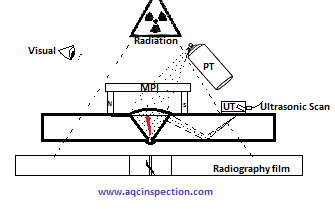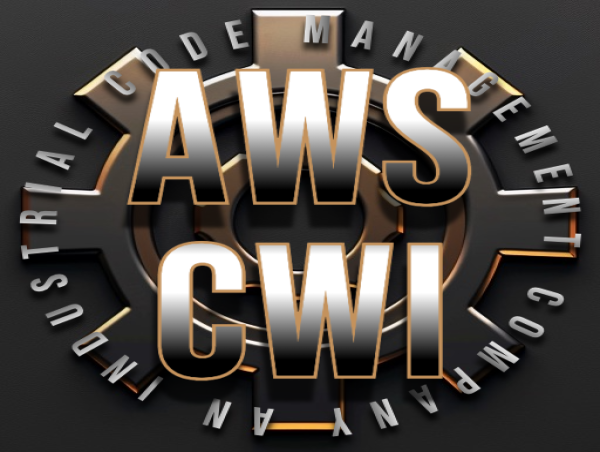Common Issues Found Throughout Welding Inspection Milwaukee and How to Fix Them

Checking Out the Different Approaches and Specifications of Welding Assessment for Achieving Conformity and Dependability in Engineering Applications
The significance of welding examination in engineering applications can not be overemphasized, as it works as an important secure for guaranteeing architectural integrity and conformity with market standards. Numerous approaches, including aesthetic examination and advanced non-destructive screening methods, offer essential understandings into the top quality of welds. Adherence to recognized governing requirements such as those from AWS and ASME develops a framework for accountability and excellence. The landscape of welding evaluation is consistently evolving, triggering a better evaluation of arising techniques and their ramifications for design reliability. What might these growths involve for future tasks?
Significance of Welding Evaluation
Welding inspection plays an essential role in ensuring the honesty and security of bonded frameworks. This process entails the systematic exam of welds to validate compliance with fixed standards and requirements. The significance of welding inspection can not be overstated, as it serves as a guard versus potential failures that can result from inadequate welding techniques. Through extensive inspection, issues such as splits, spaces, and insufficient blend can be identified early, therefore preventing devastating failings that may bring about structural collapse or security risks.
In addition, welding inspection is crucial for keeping high quality guarantee throughout the welding procedure. It guarantees that the welds satisfy the essential mechanical and physical buildings needed for their designated applications. Regular evaluations likewise foster a society of accountability and continuous improvement within welding operations, encouraging adherence to finest techniques and market requirements.
In controlled sectors such as building and construction, aerospace, and production, rigid welding examination protocols are mandated to conform with lawful and security requirements. Eventually, reliable welding examination not only safeguards human life and residential property yet likewise boosts the longevity and integrity of welded structures, making it a vital element of design and building and construction.

Usual Welding Assessment Techniques
A variety of assessment techniques are used to examine the quality and stability of welds, each customized to find certain kinds of issues. Amongst one of the most common methods is aesthetic assessment, which involves a comprehensive exam of the weld surface area to determine visible problems such as cracks, damages, and inadequate fusion. This method is typically the very first step in the evaluation process due to its simplicity and cost-effectiveness.
Another extensively made use of method is radiographic evaluation, where X-rays or gamma rays pass through the weld to reveal internal problems. This strategy is specifically effective for discovering porosity and inclusions within the weld material. Likewise, ultrasonic screening utilizes high-frequency sound waves to identify internal problems, giving a comprehensive evaluation of the weld's stability.
Furthermore, magnetic bit assessment is made use of for ferromagnetic materials, permitting the detection of surface area and near-surface defects by observing and applying magnetic areas particle patterns. Color penetrant screening includes using a fluid color to the weld surface area, exposing splits and various other gaps upon inspection (Welding Inspection Milwaukee). Each of these approaches plays a critical role in making certain weld high quality and compliance with sector standards
Non-Destructive Evaluating Strategies
Non-destructive screening (NDT) methods are essential tools in the assessment of weld high quality, enabling examiners to review the integrity of bonded joints without causing damage to the materials. Different NDT methods are employed to identify potential problems, making certain that welds satisfy the called for criteria for safety and security and efficiency.
Among one Related Site of the most prevalent methods is ultrasonic testing (UT), which uses high-frequency acoustic waves to identify interior flaws such as voids or cracks. Radiographic testing (RT) employs X-rays or gamma rays to produce pictures of welds, disclosing any discontinuities within the material. Magnetic fragment testing (MT) is effective for discovering surface area and near-surface defects in ferromagnetic products via the application of magnetic areas and contrasting particles.
Fluid penetrant screening (PT) is one more extensively made use of technique that involves using a color to the surface area of the weld, which leaks into any cracks, making them noticeable under ultraviolet light. Each of these methods offers unique benefits and constraints, and the selection of a suitable technique is vital to achieving exact assessments of weld honesty. Eventually, the implementation of NDT strategies significantly contributes to the reliability and safety and security of engineering applications.

Governing Requirements and Conformity
In the world of welding assessment, adherence to governing criteria and compliance is extremely important to make sure the safety and reliability of welded frameworks (Welding Inspection Milwaukee). Different organizations, consisting of the American Welding Society (AWS), the American Society of Mechanical Designers (ASME), and the International Company for Standardization (ISO), have actually established guidelines that regulate welding methods and evaluation treatments. These requirements supply a framework for quality assurance, laying out the necessary certifications for examiners and the methodologies for evaluating weld stability
Compliance with these regulative standards not only enhances the structural stability of welded settings up however additionally reduces risks related to failures, which can have catastrophic consequences. Examinations Continued should be done making use of defined procedures, including aesthetic, ultrasonic, and radiographic techniques, to ensure that welds satisfy defined requirements.
Moreover, adherence to these requirements is frequently called for by regulation, specifically in industries such as construction, aerospace, and manufacturing. Normal audits and certifications are important to maintain conformity, therefore cultivating a culture of safety and security and top quality within organizations. Inevitably, regulative criteria and compliance function as the backbone of trustworthy welding assessment methods, guaranteeing that crafted frameworks meet both efficiency expectations and safety requirements.
Best Practices for Welding Inspection
While maintaining compliance with regulatory criteria is essential, carrying out ideal practices for welding assessment further boosts the safety and integrity of bonded structures. Reliable welding evaluation starts with comprehensive preparation, that includes understanding the details requirements of each job and making sure assessors are well-trained in suitable methods and standards.
Making use of an extensive evaluation list aids to ensure all essential facets are examined, such as weld size, infiltration, and visual problems. Non-destructive testing (NDT) techniques, such as ultrasonic or radiographic screening, must be used where ideal, giving a much more extensive evaluation of weld top quality without jeopardizing the integrity of the materials.
Paperwork plays a considerable role in ideal practices; maintaining precise documents of evaluations, including photos, examination outcomes, and conformity reports, guarantees responsibility and helps with future evaluations. Additionally, fostering a society of open interaction in between welders check here and examiners can lead to very early recognition of prospective problems, promoting instant restorative actions.
Conclusion
In summary, the implementation of strenuous welding examination approaches and adherence to developed criteria are essential for guaranteeing compliance and dependability in design applications - Welding Inspection Milwaukee. Strategies such as aesthetic assessment, radiographic screening, and ultrasonic screening function as important tools in recognizing flaws and maintaining top quality guarantee. By cultivating a society of accountability and excellence, organizations can boost the stability and longevity of welded structures, eventually contributing to the safety and efficacy of engineering jobs
Different techniques, consisting of visual examination and progressed non-destructive testing methods, give crucial understandings right into the high quality of welds.Welding examination plays an essential function in guaranteeing the honesty and safety of welded frameworks.A variety of evaluation techniques are utilized to analyze the high quality and honesty of welds, each customized to identify certain kinds of issues.An additional commonly utilized approach is radiographic assessment, where X-rays or gamma rays penetrate the weld to reveal interior defects.In the realm of welding examination, adherence to regulative requirements and conformity is critical to make sure the safety and reliability of bonded frameworks.